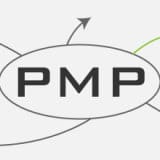PMI-ACP Agile Methods – Scrum

[PMI-ACP® Exam Study Notes] Scrum is one of the most popular Agile model. It is easy to understand but difficult to master. Scrum is based on three pillars: transparency, inspection and adaptation. This post is about the guidance practices, roles and responsibilities, events and artifacts, etc. of Scrum.
Article Highlights
Scrum Agile Model
Scrum development includes three major phases: pre-game, game, and post-game.
Scrum is based on three pillars:
- Transparency – visibility of project progress and outcome fro all involved, a common definition of “Done” is created to ensure alignment of expectations
- Inspection – inspections are done at timely intervals to look out for deviations or differences
- Adaptation – should a problem be found during inspections, project processes will be adjusted to avoid / minimize such problems from occurring in future
Scrum Roles (Teams)
- Development team – the ones who actually build the product during the iterations / sprints
- self-organizing, empowered, cross-functional
- optimal size: 7 +/- 2 (i.e. 5 – 9 team members)
- Product Owner – tasked with the responsibility to maximize the values delivered
- manage the product backlog (including prioritizing the requirements, etc.)
- lead the sprint review
- ScrumMaster – help to implement Scrum in the project
- act as a servant leader to facilitate the team and project
Scrum Events
- Sprint – the Scrum term for “iteration” (a timeboxed period for project development work), often less than a month (2-week or 1-month), to build potentially releasable products. Activities of a sprint include the following:
- Sprint Planning Meeting – a timeboxed meeting to determine what can be and will be delivered by end of the sprint based on consensus among the product owner and the team
- Daily Scrum – a 15-minute timeboxed daily meeting to look into the following three questions:
- What has been achieved since last meeting?
- What will be done?
- What obstacles are encountered / expected?
- Development Work
- Sprint Review – (about the product) a meeting held at the end of each sprint to demonstrate what has been done and agree to what need to be done next, the product backlog will also be adjusted based on the progress; to be led by the Product Owner
- Sprint Retrospective – (about the process, people, tools, relationship) a meeting to reflect on the process and look for improvements. The sprint retrospectives occur after the sprint reviews.
- Key characteristics of a healthy daily stand-up meeting:
- peer pressure – the team is dependent upon each other so expectations of peers drives progress;
- fine-grained coordination – the team should understand the necessity for focus and working dependently;
- fine focus – the team should understand the need for brevity in the stand-up meeting so the team can be productive;
- daily commitment – the team should understand the value of daily commitments to each other and uphold those commitments;
- identification of obstacles – the team collectively should be aware of each other’s obstacles so that the team collectively can try to resolve them.
- Scrum Events are time-boxed:
- Sprint Planning – 8 hours
- Daily Scrum – 15 minutes
- Sprint Review – 4 hours
- Sprint Retrospective – 3 hours
Scrum Artifacts
- Product backlog – an prioritized list of requirements of the project (often in the form functions, features, fixes and quality attributes [i.e. non-functional requirements], etc.). To be updated by the Product Owner. Higher priority requirements are more detailed in descriptions and estimates.
- Grooming – add more details to and possibly re-order the backlog by both the team and the product owner
- Sprint backlog – product backlog items selected for a particular sprint with an elaborated plan on how to achieve the sprint goal. To be updated by the Development Team only.
- Definition of Done – describe the agreed definition of when the work is considered done by all
Further Reading on Scrum
Summary: PMI-ACP® Exam Study Notes on Scrum
This PMI-ACP® Exam Study notes describes in barely enough details on the Scrum Agile methodology, including guidance practices, roles and responsibilities, events and artifacts, for the PMI-ACP® Exam.
Most Popular PMI-ACP Certification Articles
- Top 10 Tips to Prepare for the exam (I got all Proficient in my exam)
- How to Get 21 Contact Hours?
- Over 600+ FREE Quality Mock Exam / Practice Questions





 Hi, my name is Edward Chung, PMP, PMI-ACP®, ITIL® Foundation. Like most of us, I am a working professional pursuing career advancements through Certifications. As I am having a full-time job and a family with 3 kids, I need to pursue professional certifications in the most effective way (i.e. with the least amount of time). I share my exam tips here in the hope of helping fellow Certification aspirants!
Hi, my name is Edward Chung, PMP, PMI-ACP®, ITIL® Foundation. Like most of us, I am a working professional pursuing career advancements through Certifications. As I am having a full-time job and a family with 3 kids, I need to pursue professional certifications in the most effective way (i.e. with the least amount of time). I share my exam tips here in the hope of helping fellow Certification aspirants!






Hi Edward, A correction in the scrum time box mentioned above which they ask in many exams.
Sprint Review – 4hours (not 2 hours)
Sprint Retrospective – 3hours (not 4 hours )
Thanks
Thanks for pointing the errors which have been amended.